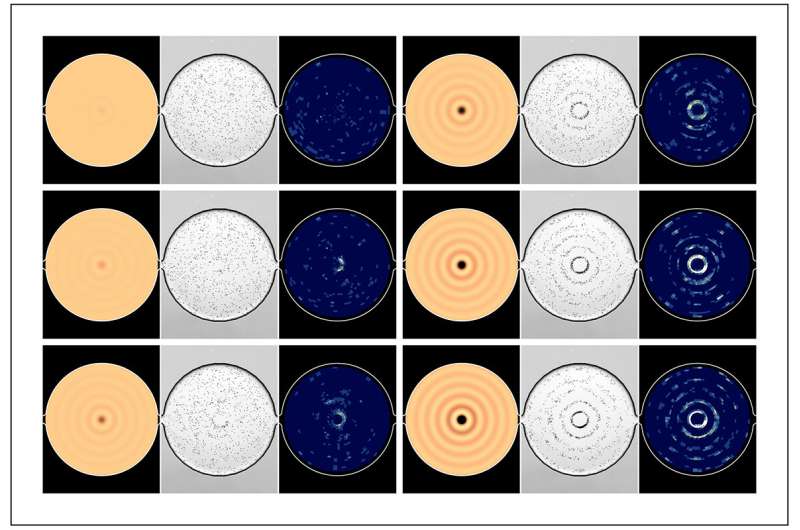Fine-tuning device performance with swarms of swimming cells

Scientists use acoustic microfluidic devices to separate and sort components in fluids, such as red and white blood cells, platelets and tumor cells in blood, to better understand diseases or to develop new treatments. However, technologies developed in research labs often lack the consistent performance needed for use in clinical and industrial settings.
A team of researchers at Washington University in St. Louis is turning the standard practice of using microfluidic tools for scientific discovery on its head by using a living organism for real-time measurement and monitoring of acoustic microfluidic device performance.
J. Mark Meacham, assistant professor of mechanical engineering & materials science in the McKelvey School of Engineering, used Chlamydomonas reinhardtii, a single-cell green alga that swims with two cilia, or whip-like structures, to test the efficacy of bulk acoustic wave devices created in his lab. These devices use piezoelectric materials to translate an electrical signal to mechanical vibrations, which then generate ultrasonic standing waves in the fluid-filled channel of a device.
Meacham and Minji Kim, a doctoral student in his lab, design these devices to operate at multiple resonant frequencies to generate strong acoustic waves with maximum energy transfer. Efficient operation is critical because inefficient devices generate heat that can kill biological cells.
It is the first reported work to provide this functionality in real time and for a variety of device geometries. Results of the work are published in Lab on a Chip Feb. 9, 2021, and are featured on the back cover of the print journal.
"The goal of this work is to use these cells to characterize the acoustic field, to find resonances and to assess field strength, and eventually to calibrate device performance using the cells as our measurement tool," Meacham said. "We know how much power is put in. The cells give us a way to evaluate how much of that power is useful."
More information: Minji Kim et al. Motile cells as probes for characterizing acoustofluidic devices, Lab on a Chip (2021). DOI: 10.1039/D0LC01025A
Journal information: Lab on a Chip
Provided by Washington University in St. Louis




















